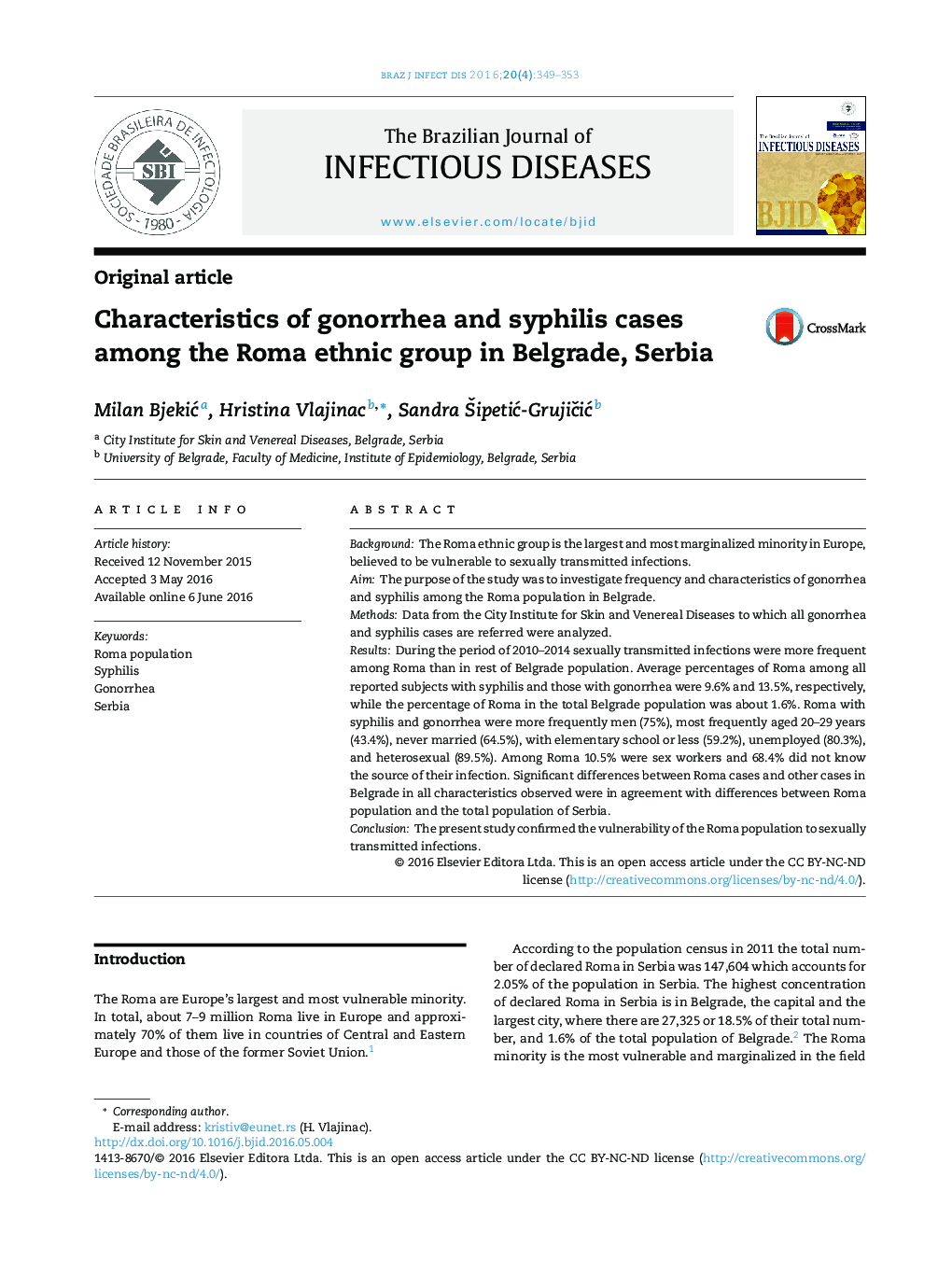| Article ID | Journal | Published Year | Pages | File Type |
|---|---|---|---|---|
| 3343713 | The Brazilian Journal of Infectious Diseases | 2016 | 5 Pages |
BackgroundThe Roma ethnic group is the largest and most marginalized minority in Europe, believed to be vulnerable to sexually transmitted infections.AimThe purpose of the study was to investigate frequency and characteristics of gonorrhea and syphilis among the Roma population in Belgrade.MethodsData from the City Institute for Skin and Venereal Diseases to which all gonorrhea and syphilis cases are referred were analyzed.ResultsDuring the period of 2010–2014 sexually transmitted infections were more frequent among Roma than in rest of Belgrade population. Average percentages of Roma among all reported subjects with syphilis and those with gonorrhea were 9.6% and 13.5%, respectively, while the percentage of Roma in the total Belgrade population was about 1.6%. Roma with syphilis and gonorrhea were more frequently men (75%), most frequently aged 20–29 years (43.4%), never married (64.5%), with elementary school or less (59.2%), unemployed (80.3%), and heterosexual (89.5%). Among Roma 10.5% were sex workers and 68.4% did not know the source of their infection. Significant differences between Roma cases and other cases in Belgrade in all characteristics observed were in agreement with differences between Roma population and the total population of Serbia.ConclusionThe present study confirmed the vulnerability of the Roma population to sexually transmitted infections.
